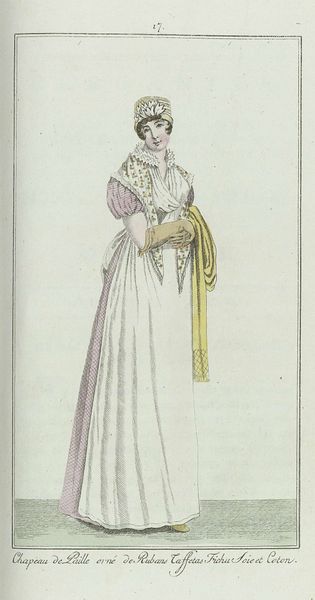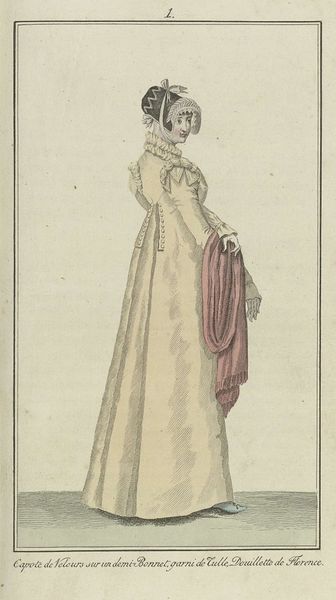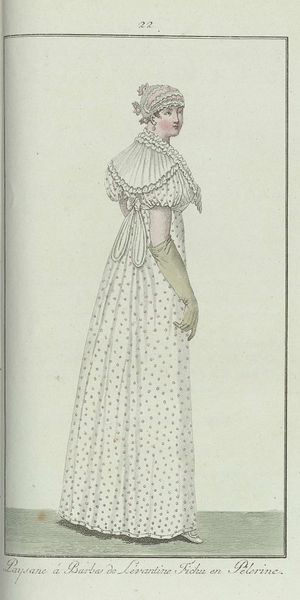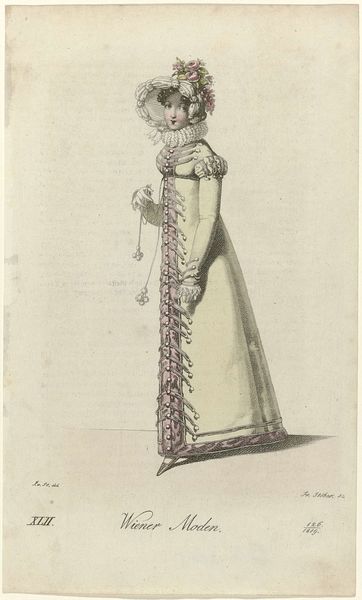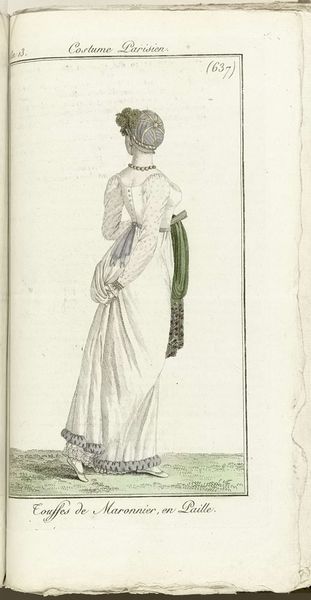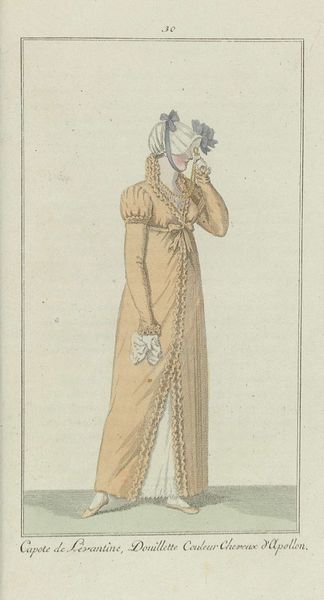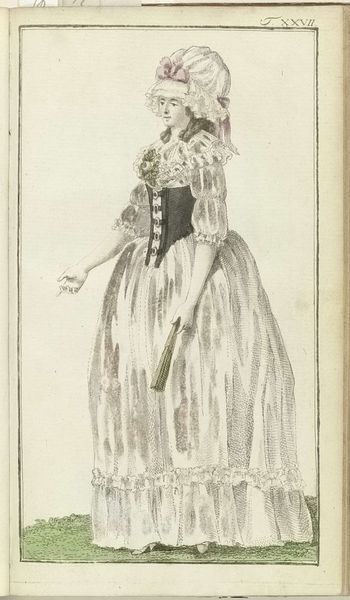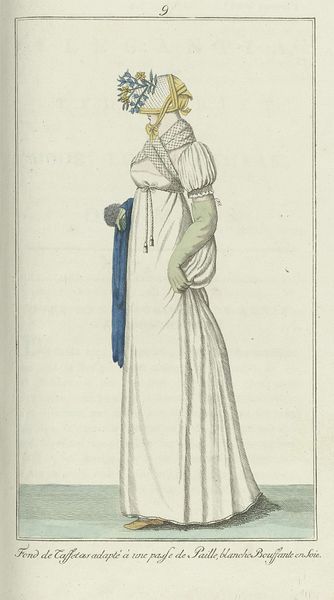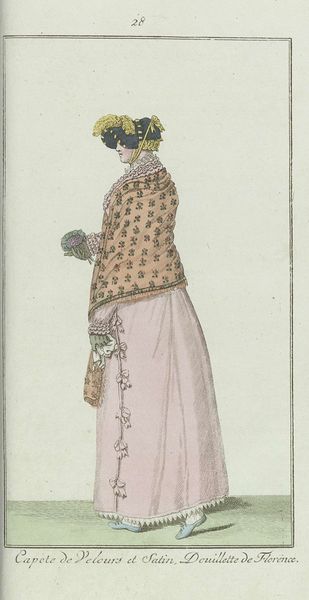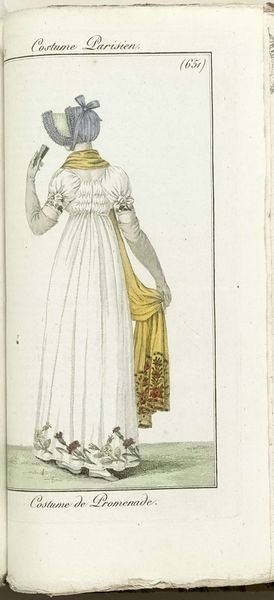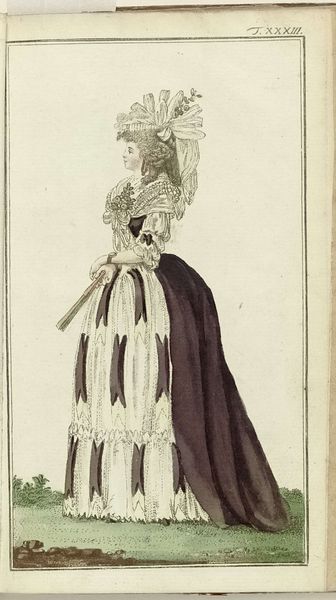
Elegantia, of tijdschrift van mode, luxe en smaak voor dames, November 1807, No. 26: Capote de Satin... 1807
0:00
0:00
drawing, print, etching, paper
#
portrait
#
drawing
# print
#
etching
#
paper
#
historical fashion
#
romanticism
#
history-painting
#
dress
Dimensions: height 215 mm, width 103 mm
Copyright: Rijks Museum: Open Domain
Curator: Let's consider this print titled "Elegantia, of tijdschrift van mode, luxe en smaak voor dames, November 1807, No. 26: Capote de Satin..." created anonymously in 1807. It's currently housed at the Rijksmuseum. We're looking at an etching and drawing, printed on paper. Editor: Wow, the sheer volume of fabric! The way the gown pools slightly at the hem whispers stories of status, but something about the stiffness feels almost like a uniform, a beautiful one, but still… restrained. Curator: Exactly. These fashion plates offer a window into the textile production and consumption of the early 19th century. Think about the labor involved in creating that much fabric, the supply chains to obtain it, the market for this "luxury and taste." The print is a commodity in itself, documenting the circulation of other commodities. Editor: And it’s not just fabric; it’s aspiration woven in. That towering feathered hat… I wonder, did it bring her joy, or was it just another marker of obligation, a public performance? Does the image promote accessibility to fashion and good taste or reinforce class division? It makes me feel kind of dizzy with conflicting interpretations. Curator: Indeed, this isn't simply about aesthetics, but about social control through fashion. Who dictates these styles, how are they produced, and who can afford them? Those are central questions the artwork invites. It appears to suggest access but at what cost and access for whom? The medium itself - the printed image - is a form of dissemination that is controlled and, by extension, controlling. Editor: I find myself captivated by the textures, the promise of satin smoothness against the patterned shawl. It's funny how something designed to conceal and present at once has this strange power to pull you in, making you question the very fabric of societal expectation. Almost ghostly too, like we're peering back into a dream, or a half-remembered fairytale, as opposed to a clear reflection. Curator: It's a visual document loaded with implications. Thinking about these artifacts – the print, the clothing, the whole apparatus of "taste" – offers critical insight into the economic and social frameworks of the time. Editor: Right. And it gives us the vocabulary to understand its echo in our time too. I'm ready to analyze some modern fashion prints and the structures that created them, now.
Comments
No comments
Be the first to comment and join the conversation on the ultimate creative platform.
